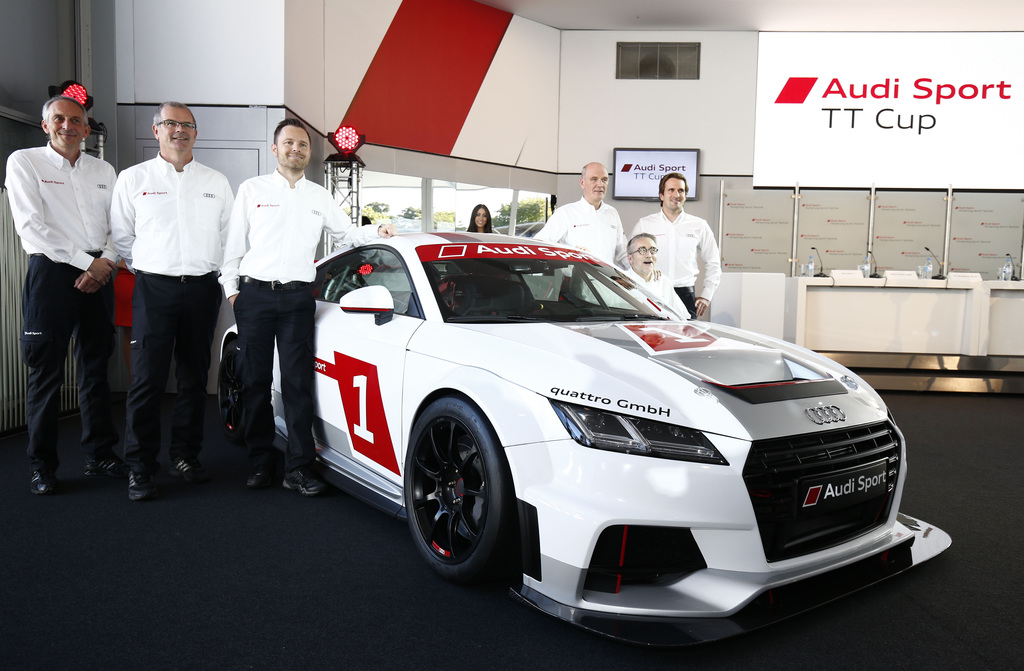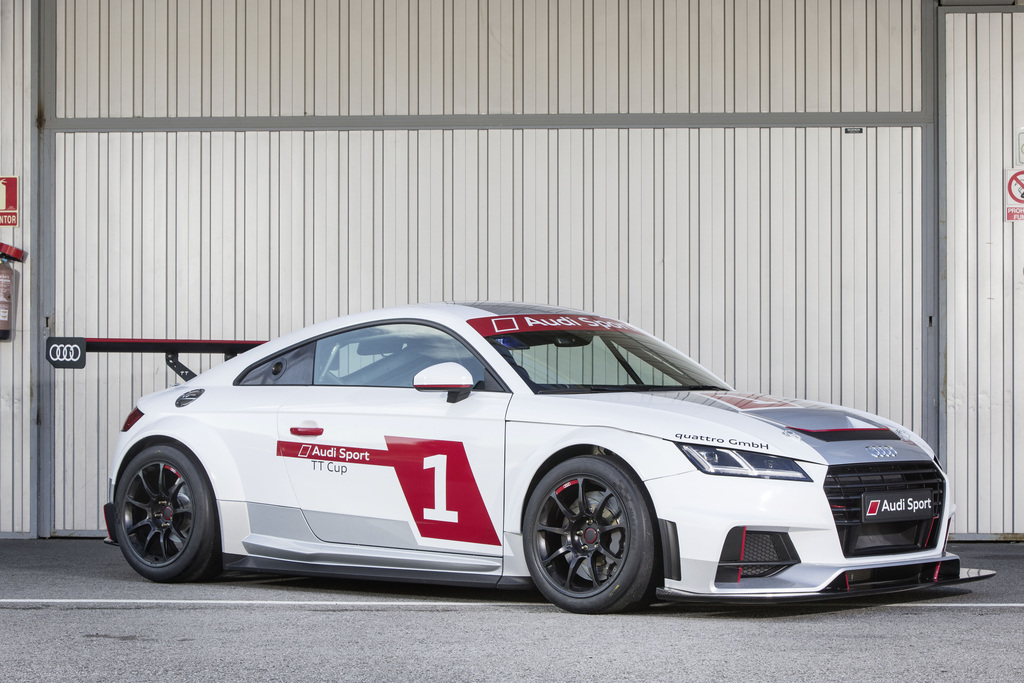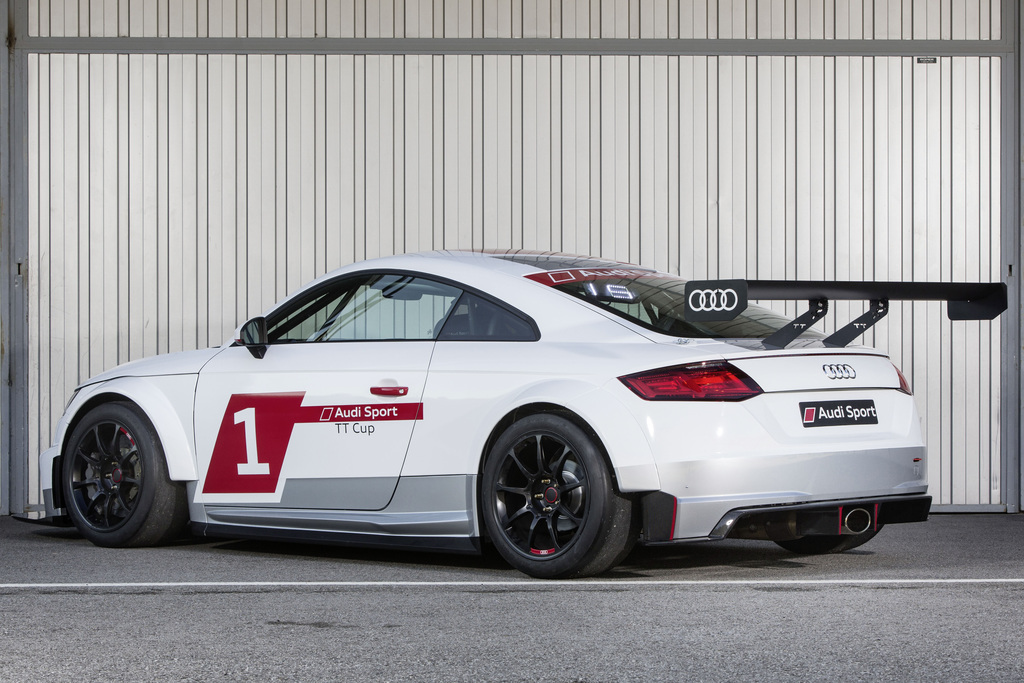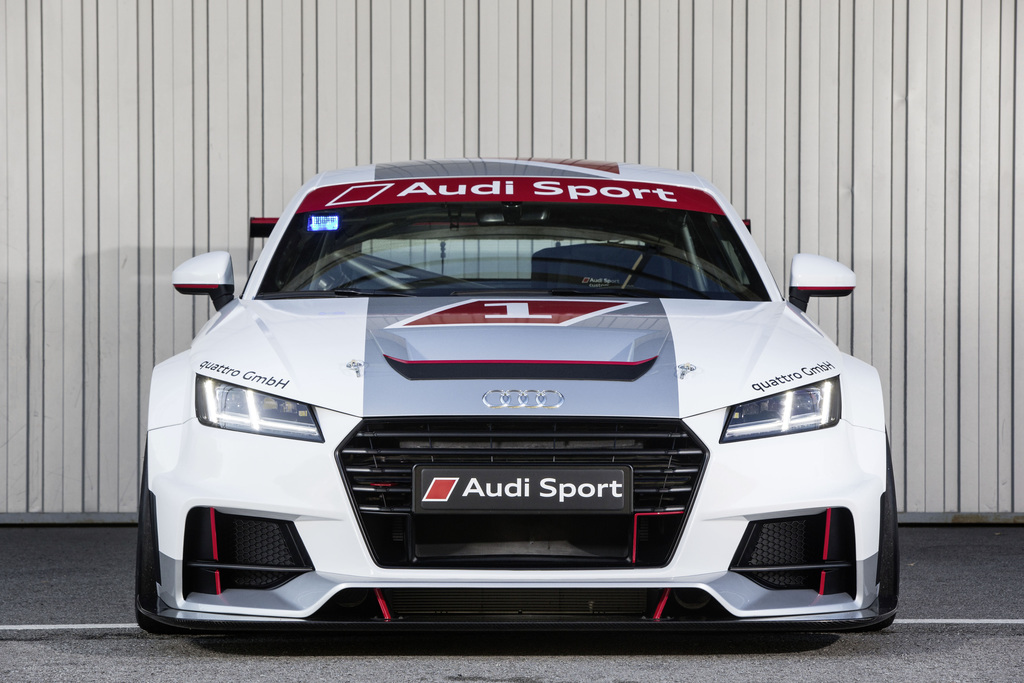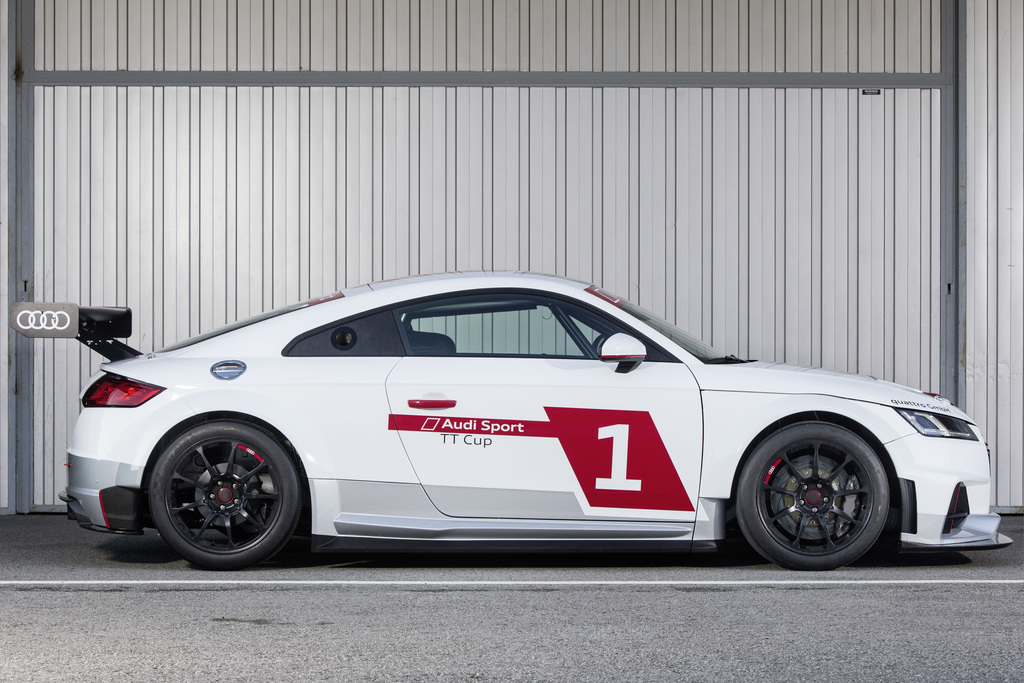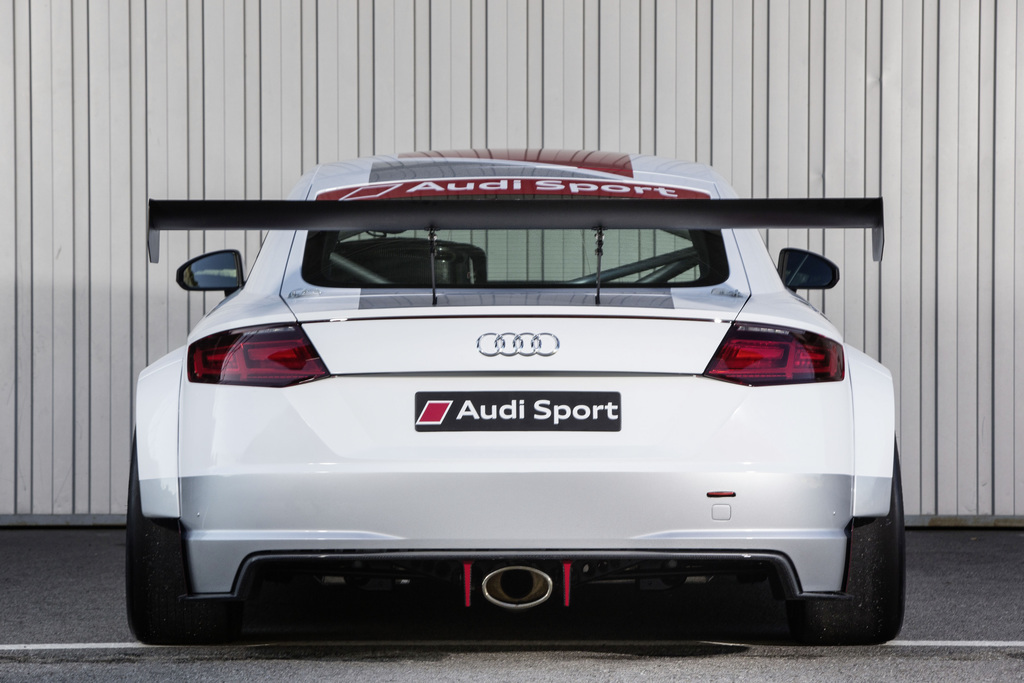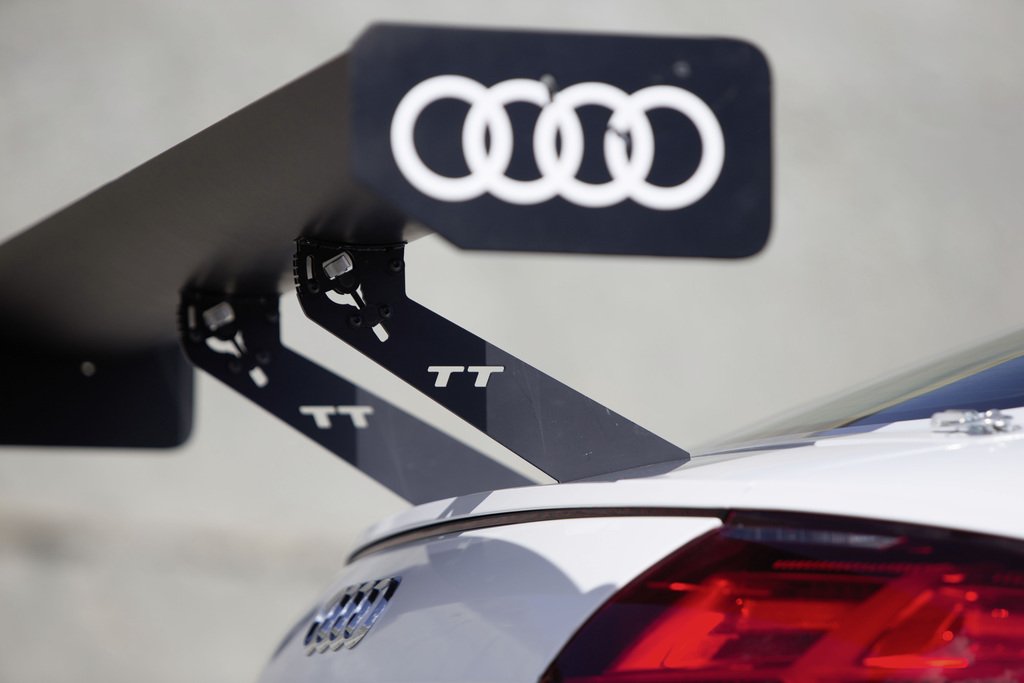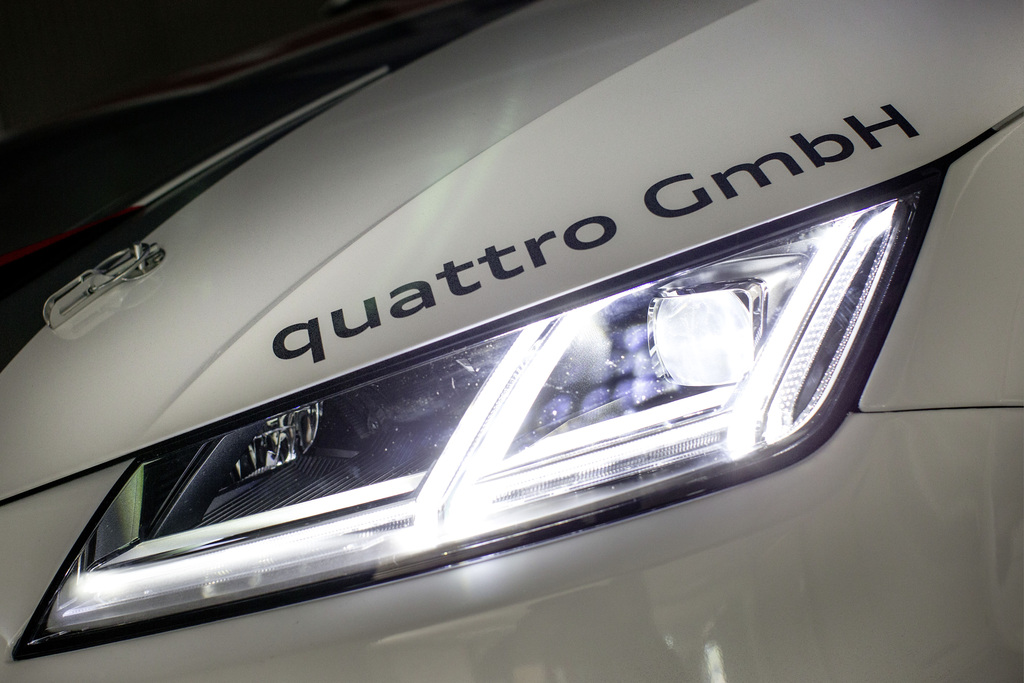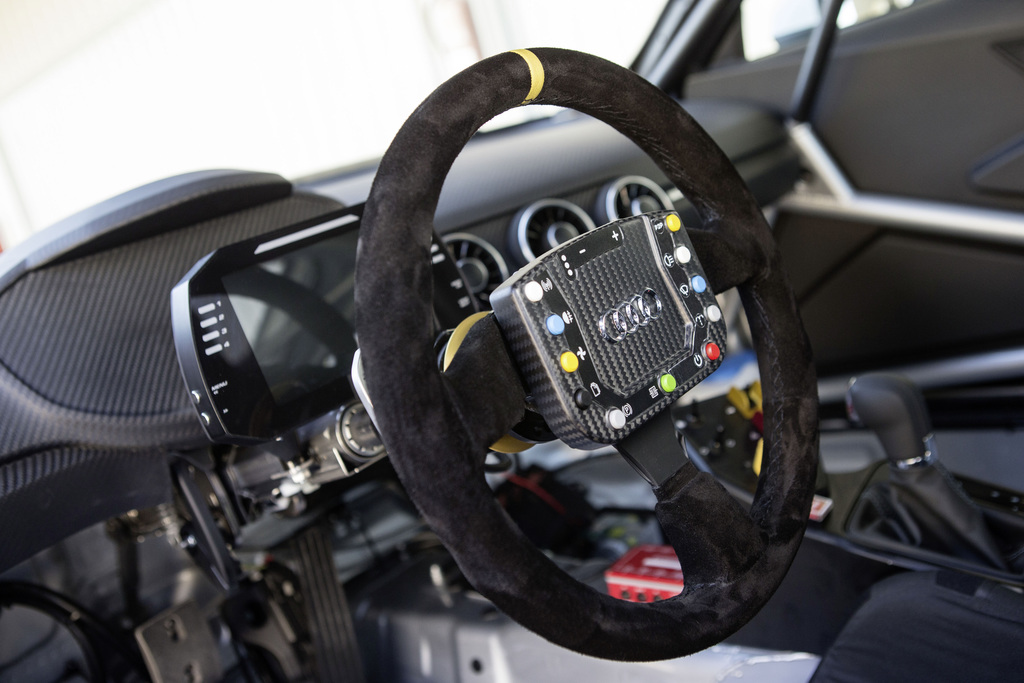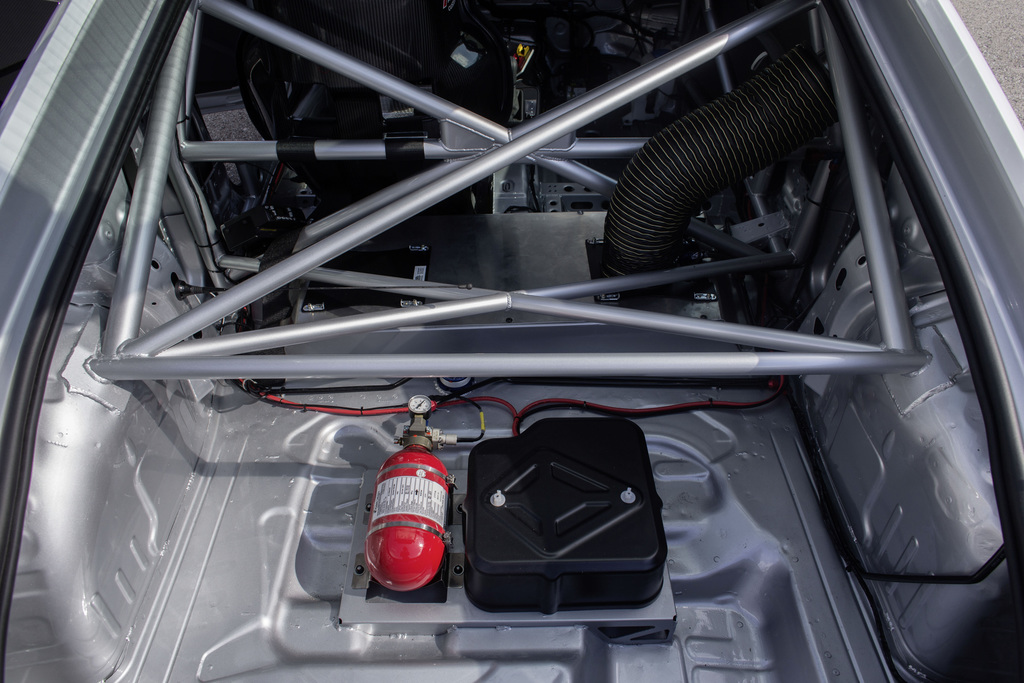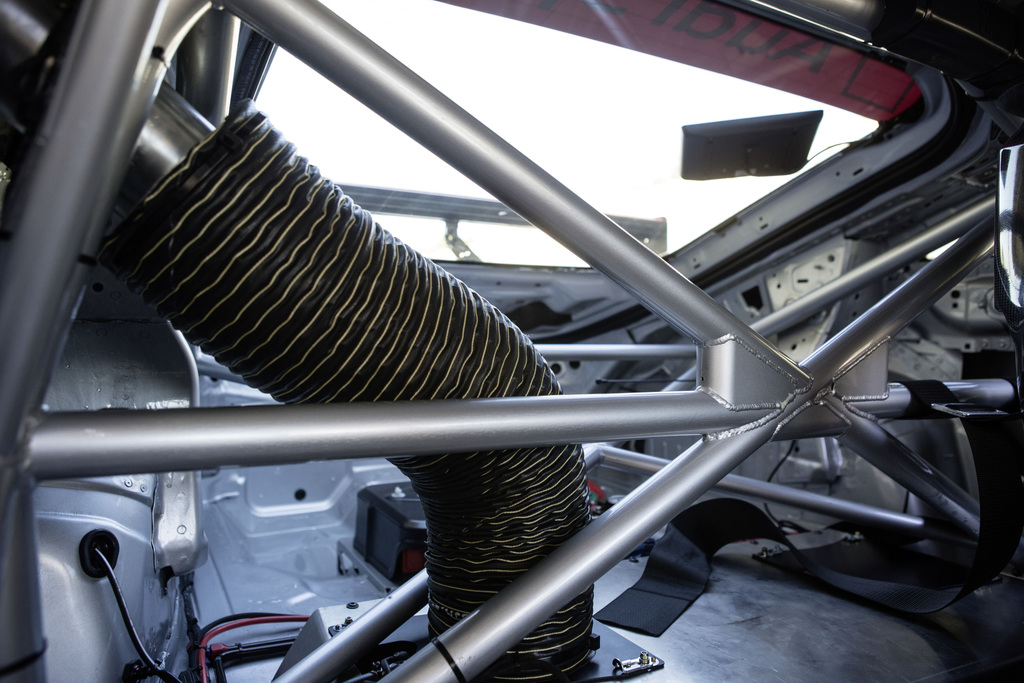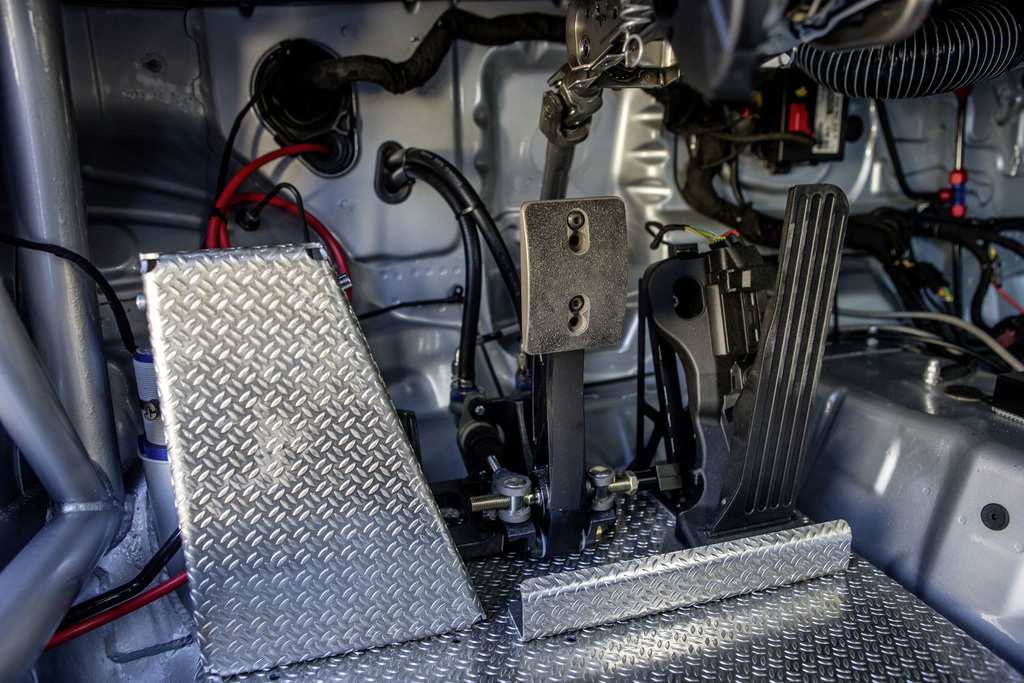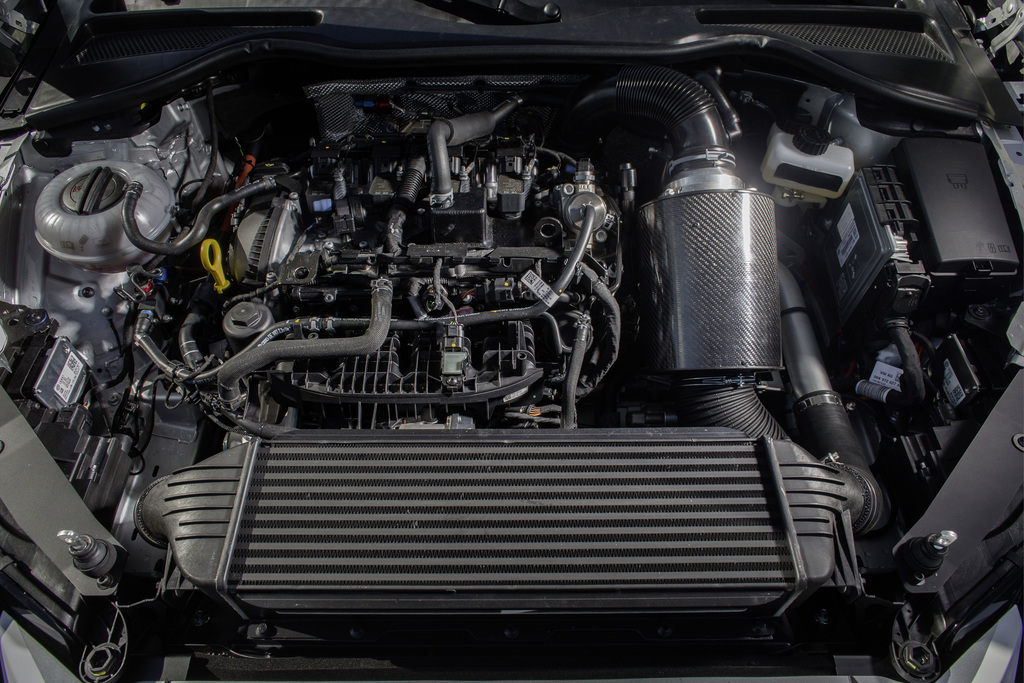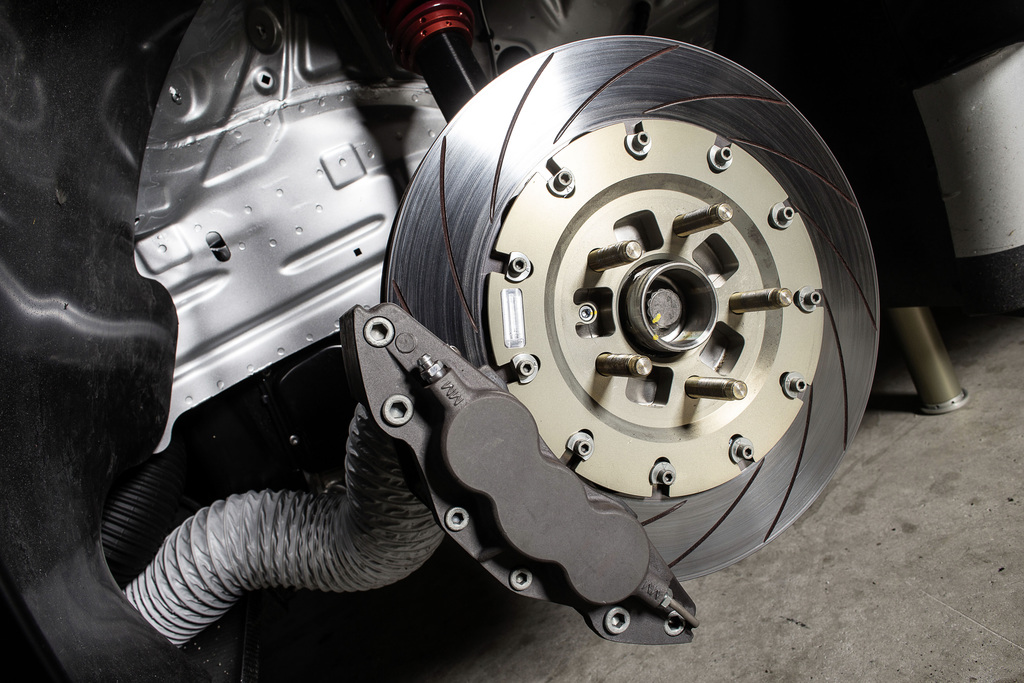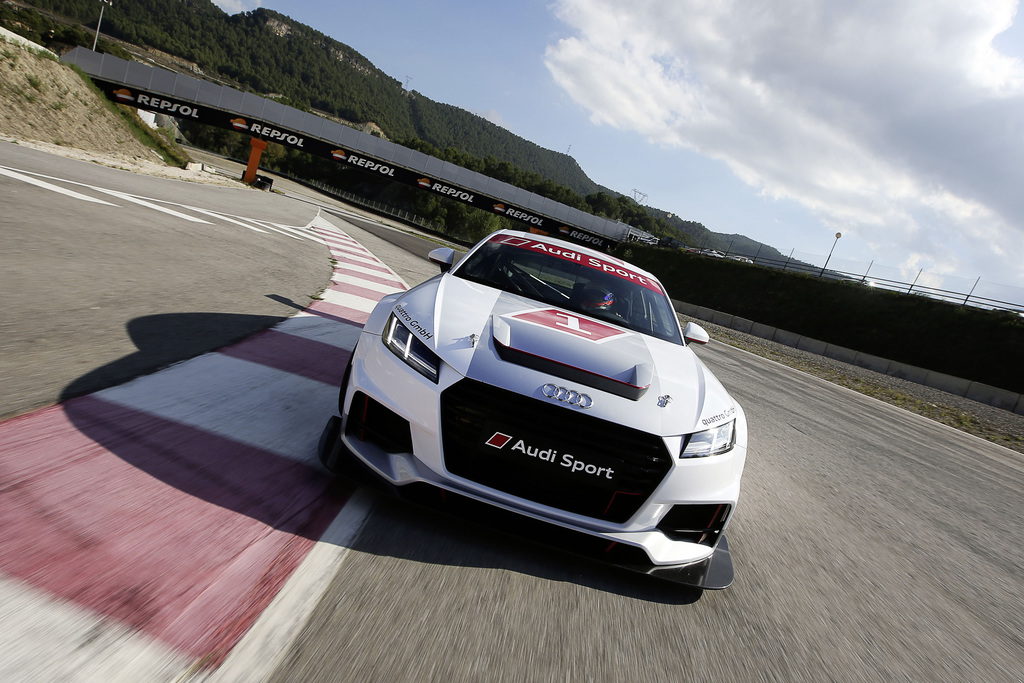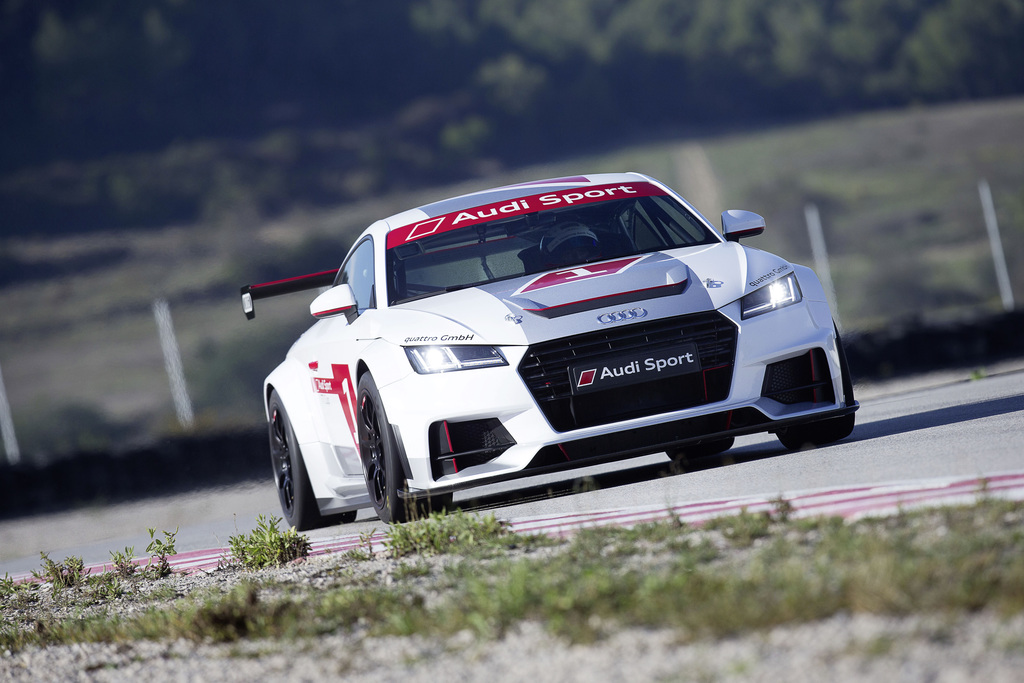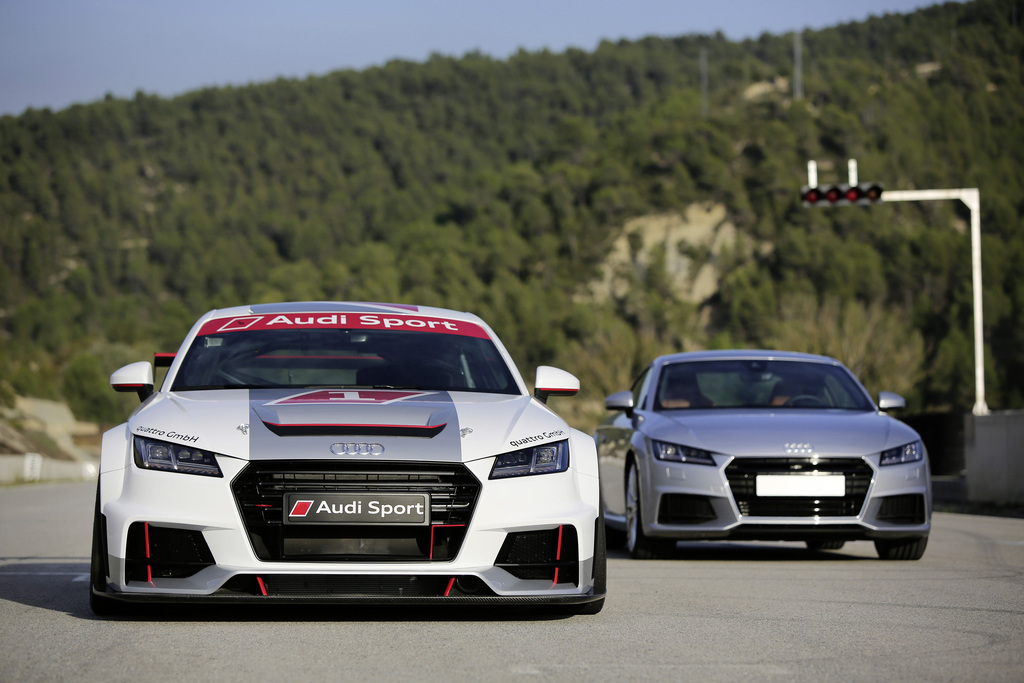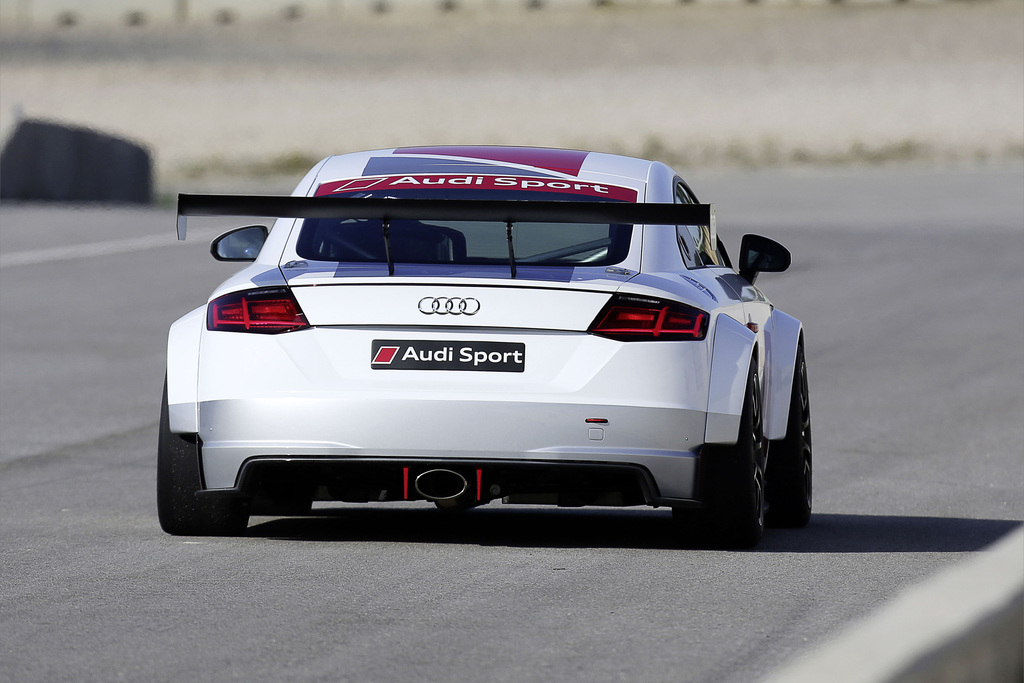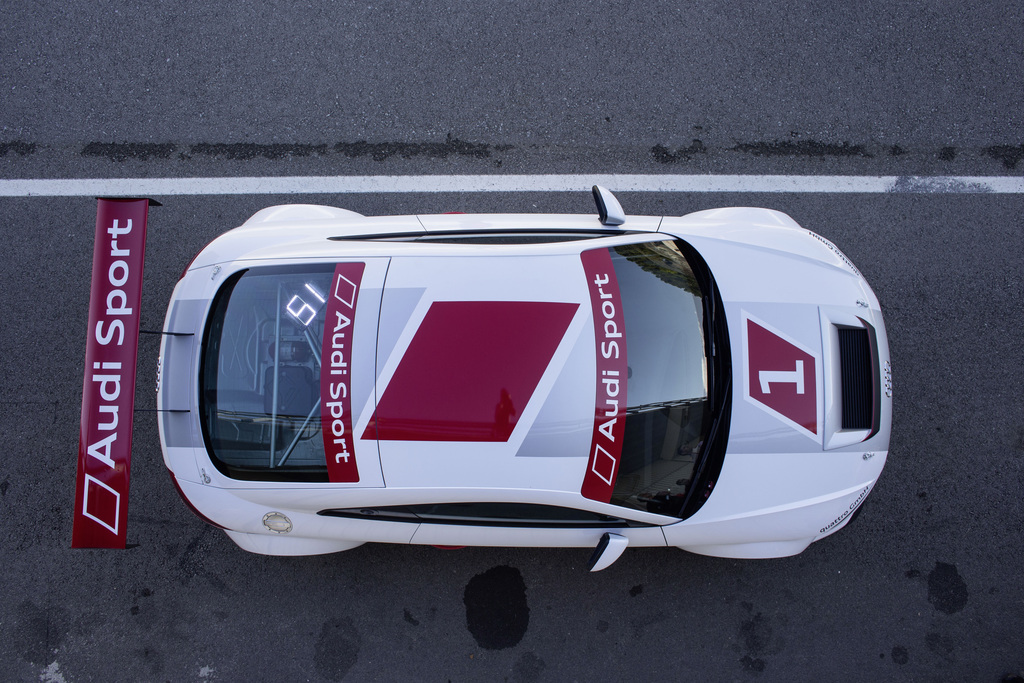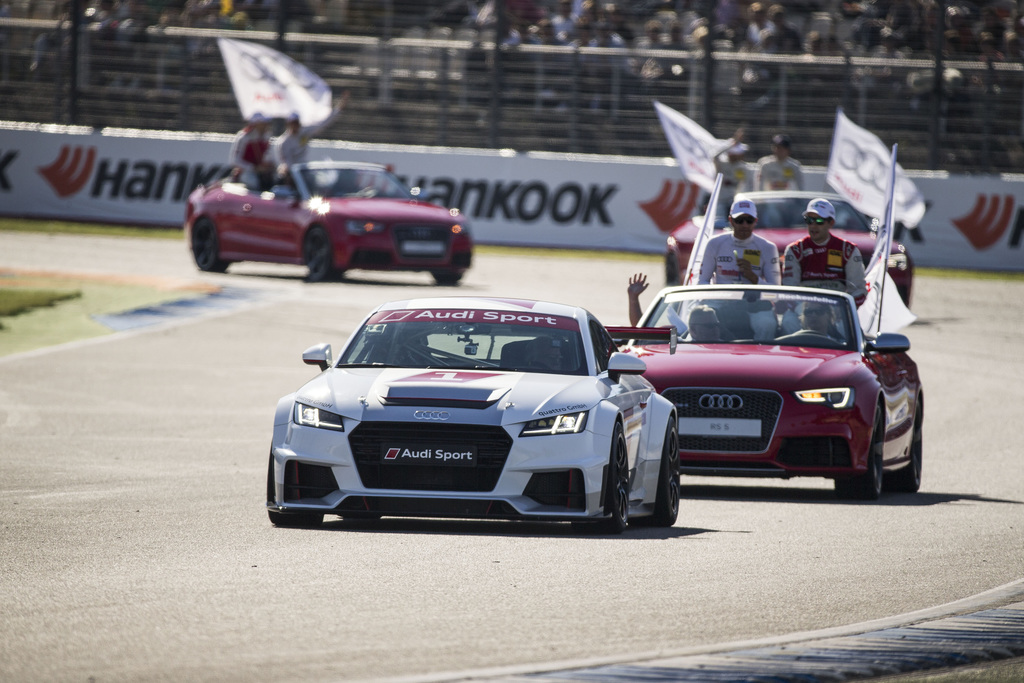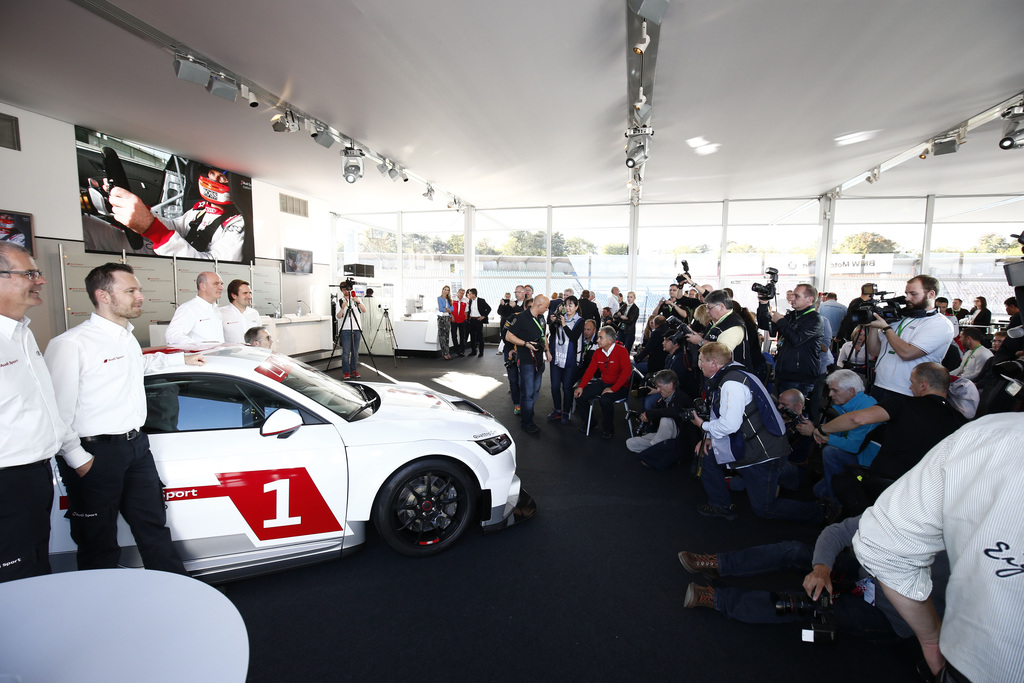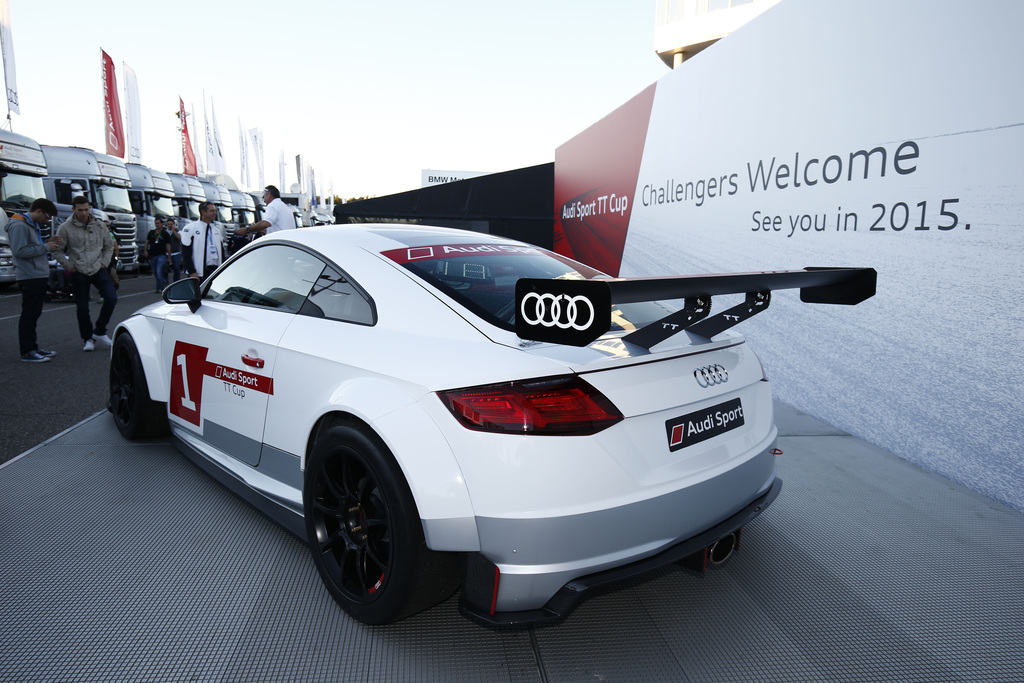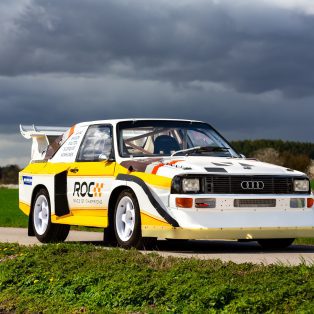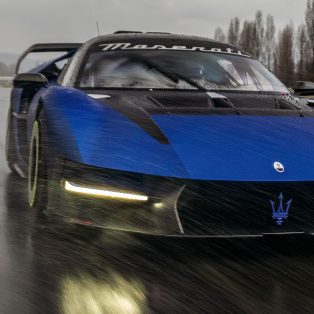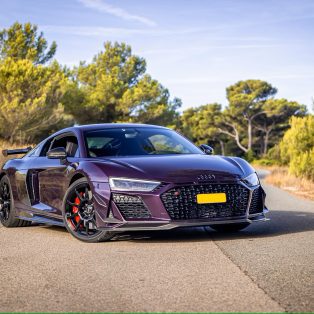2015 Audi Sport TT Cup
With a dedicated racing series for the Audi TT the brand with the four rings will be offering a new opportunity to enter the company’s successful motorsport world. The Audi Sport TT Cup will be held as part of the DTM starting in the 2015 season.
For the Audi Sport TT Cup, quattro GmbH has developed a visually as well as technologically attractive race sports car that benefits from the technological innovations of the production model – particularly in terms of lightweight design.
The body of the third-generation production TT* is created using a new, intelligent combination design. The highly complex material mix of aluminum and steel marks the next evolutionary stage of the Audi Space Frame (ASF). The body is so light that it can be adopted for racing nearly unchanged from the production line in Győr. “We can make it 20 kilograms lighter by means of racing-specific modifications,” says Detlef Schmidt, Technical Project Manager for the Audi TT cup.
Maximum safety and stiffness is provided by a steel roll cage that has been specifically designed for the Audi TT cup and is welded to the body. The bodyshell of the new race car consists of aluminum and carbon fiber. This, too, makes the Audi TT cup a lightweight of 1,125 kilograms with extreme agility.
The 228 kW (310 hp) two-liter four-cylinder TFSI stems from the production car nearly unchanged. Only the crankcase ventilation has been modified for the higher centrifugal forces that typically occur in racing. By means of a so-called push-to-pass function the engine’s output can receive a short-term boost of 22 kW (30 hp) for overtaking maneuvers by pushing a button on the steering wheel. A blue lamp in the windshield indicates the boost activation. LEDs in the rear window show rivals and spectators how many times the driver can still use the additional power. The number of available boosts is defined by the regulations.
Power is transmitted to the front wheels via a direct-shift dual-clutch transmission. The six-speed S tronic, which has been specifically tuned for use in racing, is operated by shift paddles on the steering wheel. Accordingly, the Audi TT cup only has two pedals, for gas and the brake.
An active electro-hydraulic Haldex limited-slip differential provides optimal traction on the front axle. It can be electronically adjusted from the cockpit. Three different settings are available. Always centrally in the driver’s field of vision is a high-resolution central color display, which – similar to the new Audi virtual cockpit of the production TT – shows all the key data.
As is customary for Audi race sports cars, the driver controls the key functions via buttons on the steering wheel. The Audi PS1 Safety Seat has been adopted from the Audi R8 LMS ultra. The fire extinguishing system was originally developed by Audi for its Le Mans prototypes.
In terms of aerodynamics the Audi TT cup is a genuine GT sports car as well. A large front splitter provides downforce at the front axle, balanced at the rear axle by a rear wing with a long rearward projection. The company has optimized the cooling air ducts for racing. The optionally available LED headlights of the production TT also give the race car a distinctive face.
The development of the Audi TT cup began in June 2014 and the rollout took place on the Spanish race track at Castellolí in early October. Until the first race in spring of 2015 the TT will be completing the intensive test program on various European race tracks that is typically run for all new Audi race sports cars – including a 30-hour endurance test. Preparation of the race cars will start at the end of January.
“We’re applying the same high standards in terms of quality and reliability to the TT cup as to the Audi R8 LMS,” says Romolo Liebchen, Head of Audi Sport customer racing. “That’s simply expected of an Audi.”
Story by Audi Motorsport
In Detail
| submitted by | admin |
| type | Racing Car |
| released at | 2014 DTM Finale |
| built at | Germany |
| engine | TFSI Straight 4 |
| position | Front, Transverse |
| valvetrain | DOHC, 4 Valves per Cyl |
| fuel feed | Direct Injection |
| displacement | 1984 cc / 121.07 in³ |
| bore | 82.5 mm / 3.25 in |
| stroke | 92.8 mm / 3.65 in |
| compression | 9.3:1 |
| power | 228.2 kw / 306 bhp @ 5500 rpm |
| specific output | 154.23 bhp per litre |
| bhp/weight | 272.0 bhp per tonne |
| torque | 380 nm / 280.3 ft lbs @ 1800 to 6800 rpm |
| driven wheels | AWD |
| curb weight | 1125 kg / 2481 lbs |
| transmission | 6-Speed Automatic |
| tran clutch | Dual-Clutch |





